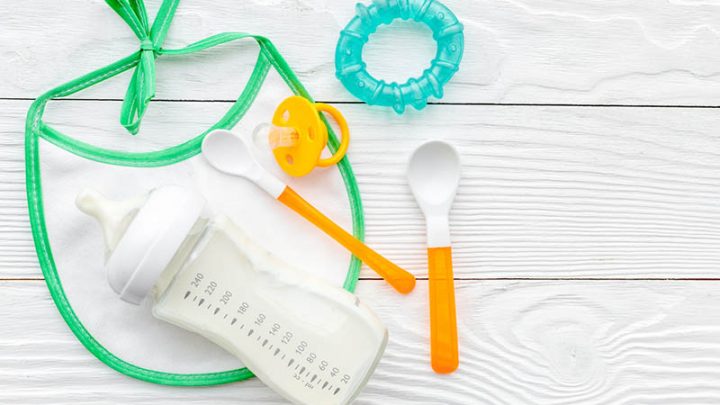When you’re expecting your first baby it’s a magnificent and terrifying time, as you are excited about meeting your little bundle of joy, but have no idea which baby gear you should buy.
This is where we all make our biggest mistakes.
We want only the best for the baby, so we spend a fortune on baby bottles, clothes, and electric or non-electric breast pumps even though we’re not sure whether we will need any of them.
However, when you’re expecting a second baby, you already know the drill and have old baby items you want to reuse.
But, can you reuse baby bottles?
The short answer is yes.
Bottles are just like plates or other kitchen utensils, but there are certain things you should take care of before using them again.
Read on to find out if you can reuse baby bottles and other baby gear, and which baby items you should rebuy.
How Can You Reuse Baby Bottles?

You probably used most of the bottles you bought at least once to try them out, and then they all ended up stored away somewhere in the house until the second child arrives.
However, before you can use them for the second time you have to ensure these bottles are completely safe for your little one.
A baby’s immune system is immature, which makes your little one susceptible to infections and food poisoning.
In order to avoid anything bad happening, make sure to prepare the old bottles properly and sanitize them before you reuse them for the new baby.
1. Examine all bottles
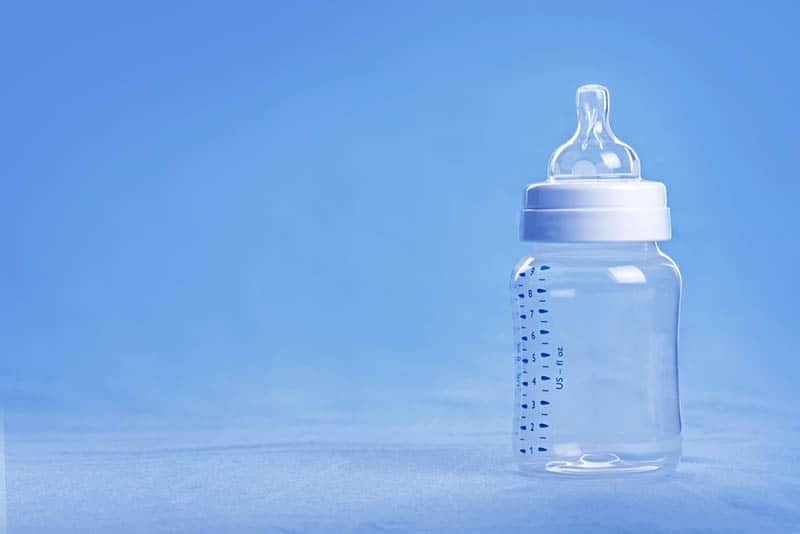
First of all, let’s examine the components of bottles.
As we all know, each baby bottle has two main parts: the bottle nipple and the container.
The good news is you can reuse the container in most cases.
However, bottles do go through a lot as your little one grows, and it is highly likely they have some imperfections.
Before you can reuse bottles you need to examine them to see if there is any damage, including leaks, scratches, discoloration, or any type of strange mark, which could be mold or mildew.
The best way to check if there are any leaks or dents is to fill each bottle with lukewarm water and leave it for a short time.
If there is any leakage, it’s time to buy new bottles.
2. Replace nipples

When people ask me: “How can you reuse baby bottles?”, They usually expect me to say they can just wash them without replacing any parts.
Some even tried to convince me that the bottle nipples can be reused as well.
Let me make it clear – bottle nipples should not be reused under any circumstances.
If you had to change teats as your first child grew, why would you use second-hand nipples for your second child?
Baby nipples get worn out faster than containers, and even though they do not have an expiration date, many baby bottle brands strongly recommend replacing them after three months of use even if there is no noticeable damage.
Cracks, discoloration, stickiness, and swelling are signs of a deteriorating teat.
If you notice any of these signs, you should immediately replace it with a new nipple.
Before I had my first child I bought three different sets of bottles and tons of slow, medium, and fast flow teats.
I tried each of them to test which one fit her the best, and we ended up using the medium one for quite a long time.
All of the other nipples went into storage until I had my second child, and when I got them out most of them had that yucky yellow color, so I had to throw them away and buy new ones.
Instead of throwing money away, you can just get one of each to test which one suits your baby the best and then buy more of the same size so you can easily switch them and extend their lifespan.
3. Cleaning process
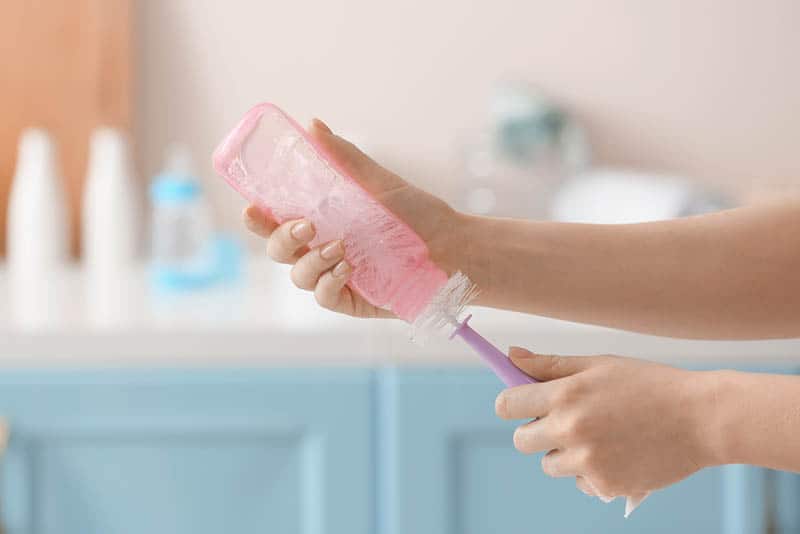
Now that you have checked everything and have a bottle container in good shape, you can continue with the cleaning process.
Some argue whether old bottles need sterilizing or not, and I would say this is a subjective matter.
Some parents usually sterilize bottles with a special device to ensure they are completely safe.
However, this is not a necessary step, especially if you go through the whole cleaning process.
The first step of this process is to prepare a clean basin.
Washing bottles directly in the sink is not recommended as the sink can be full of germs that might harm your baby.
Pour warm or hot water into the basin along with some baby dish detergent.
Leave the bottles in the basin for at least 15-20 minutes and then scrub each of them with a brush.
After you have cleaned every bottle (and the bottle ring!), rinse all the parts under cold or warm water (this part is up to you).
After that, you can sterilize the bottles.
However, you must be careful with this part.
If you’re reusing plastic bottles you should read the labels and instructions to find out if they are heat-resistant.
Most BPA-free plastic bottles can be boiled, but if that’s not stated on the label I’d skip this part and buy new bottles.
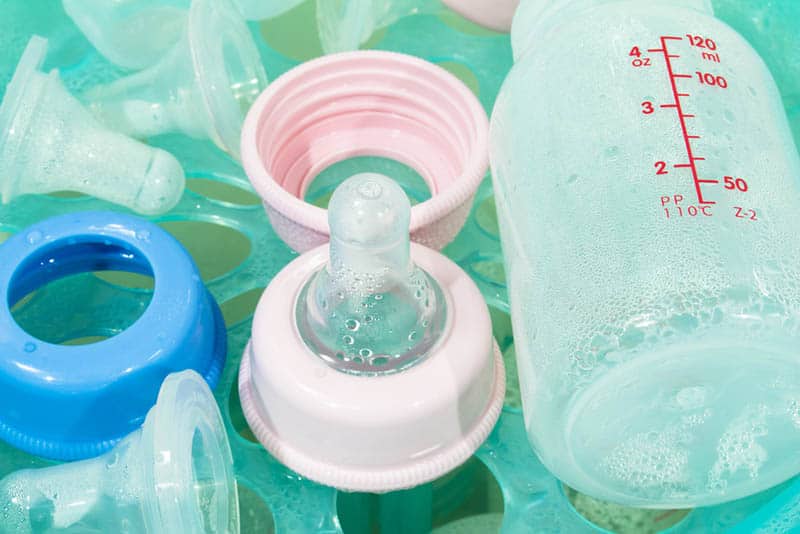
Some plastic bottles may leach chemicals into the liquid if exposed to high temperatures and harm your little one’s health.
So, if you can’t put hot water or milk in the bottle, why would you even use it?
The easiest way to sterilize bottles is to boil them in hot water for five minutes or use a sterilizer.
After that, use clean tongs to take them out and put on a clean towel.
The most important part of sterilization is to dry the bottles thoroughly before putting them away.
If there is any moisture left in the bottle it may cause mold or an unpleasant smell.
Another way of sterilizing bottles is by using steam.
You can put the disassembled bottle in a microwave or a steam system.
However, I would recommend this method only if it’s stated in the manufacturer’s instructions.
Some people use bleach as well, but I would avoid this.
Call me paranoid (lol!) but I would be too afraid to use the bottle again after exposing it to bleach.
Sterilization is very important, not only for reused bottles but for all bottles used by infants up to three months, preemies, or babies who have a weak immune system.
Can you wash bottles in the dishwasher?

If the manufacturer states that the bottle is dishwasher-safe, of course.
The best way to do this is to disassemble the bottle and rinse it thoroughly before putting them inside, especially if you are already using them for breast milk or formula.
Smaller parts, like rings and nipples, can be put in a mesh laundry bag if there is no closed basket to avoid any accidents with the spray arm or filter.
Even though dishwashers already have a heated drying cycle, it would be good to run the sanitizing cycle as well, if there is one.
Make sure your hands are clean when you take out the bottle parts.
Glass vs Plastic Bottles
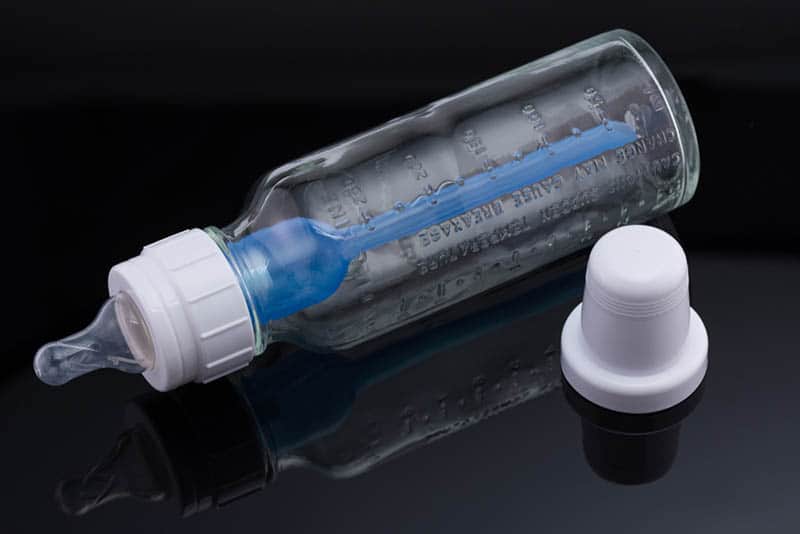
Years ago, glass infant bottles were considered the best and safest option for babies, as most plastic bottles contained harmful components, such as BPA, phthalates, and PVC.
However, the situation has changed over the last few years as most of these chemicals were banned in baby items.
People started using plastic bottles more as they were cheaper, lightweight, and fall resistant, which is important as babies usually like to throw things on the floor.
However, glass bottles have recently made a return to the market as a more eco-friendly option.
Glass bottles have their upsides and downsides, just like plastic bottles, but when it comes to lifespan, they are just the same.
Baby bottles usually last about six months according to manufacturers, but some might have a longer lifespan depending on what is stated on the bottle.
Even though some parents think glass bottles may last longer because they are sturdy and made of tempered glass, they can also develop mold or fungi, or chip and harm your baby.
Glass bottles are not that expensive anymore, and you can find them for the same price as plastic bottles (depending on quality), so don’t risk your child’s health just to save a few bucks.
What Other Baby Items Can You Reuse?

Of course, bottles are not the only baby items you can reuse for your second child.
Your older child probably doesn’t require any of his baby gear anymore, so you can prepare all the items for the younger child.
The things you can definitely reuse again, even if they have some spots or slight discoloration, are:
• Clothes
• Burp cloths
• Bibs
I personally recommend using organic clothes for kids, especially babies that have very delicate skin.
There are some things you could reuse, but which should be thoroughly examined:
• Crib or bassinet
• Stroller (or travel system)
• Bouncer
• Stair gates
• Dishes
• Car seat
• Bathtub
If you want to use the crib or bassinet from your first child, you’ll have to check a few things first.
Neither of them should be more than 10 years old, and the frame should be firm and sturdy, without any movements.
When it comes to the crib mattress, even though it doesn’t seem like a problem to use the same one with the second baby, it does pose certain health risks, including SIDS (Sudden Infant Death Syndrome).
The mattress may look like it’s in good condition at first glance, but if it wasn’t covered with waterproof sheets I’d rather replace it.
All other items should be checked for their expiration date, but also for any traces of wear and tear, as most of these baby items are used regularly.
It is extremely important to check the expiration date of infant car seats as they usually expire sooner than car seats for older children.
Also, if you are not using the car seat from your older child, make sure it wasn’t involved in any type of car accident that could make the car seat unsafe for your baby.
Baby items you should not reuse are:
• Breast pumps (they may have breast milk residue – this includes second-hand breast pumps as well)
• Pacifiers (I’d rather use alternatives for pacis generally)
• Teats (as discussed earlier)
What about toys?

Toys are usually reusable, but only if they are stored properly.
First-time parents usually buy tons of toys or receive them as baby gifts, so they usually end up with at least one room full of toys while their little ones play with kitchen utensils (been there, done that).
After some time, you just realize your munchkin is already too old for some of those toys, so you put them away in the basement, the attic, or the garage (or take them to your parent’s house, ha).
However, when the little one arrives, you remember all those toys that could save you a lot of money.
But, before giving them to your new child, make sure to check if those toys are still in good condition.
First of all, make sure there isn’t any physical damage that might cause harm to your little one, like shards.
After that, check if everything still functions right.
If you spot any mold, mildew, or notice the toy has a funny smell, it should be tossed out immediately.
Sanitize all toys before giving them to the baby, especially the ones your first child used for teething.
The Bottom Line

Can you reuse baby bottles?
Yes, but only under the specific circumstances we discussed earlier.
Every parent wants only the best for their child, but it’s completely understandable that you want to save a few dollars, as you will spend them on diapers, food, wet wipes, and other baby items.
Baby bottles are not the only items that can be reused, of course.
But, if you plan to reuse baby gear you have to examine most of it thoroughly to make sure they are perfectly safe for your little bundle of joy.
There are some things you’ll have to replace, but I wouldn’t recommend that until the in-person or virtual baby sprinkle party, as you might get a few useful things gifted to you.
So, before you open Amazon or any other online site to buy new baby gear and toys, check if your baby will receive them as gifts!
Now, get to work mama, and prepare yourself for another bundle of joy!
Like this post? Please share or pin it for later. You can also stay in the loop and follow us on Facebook, Instagram or Pinterest.
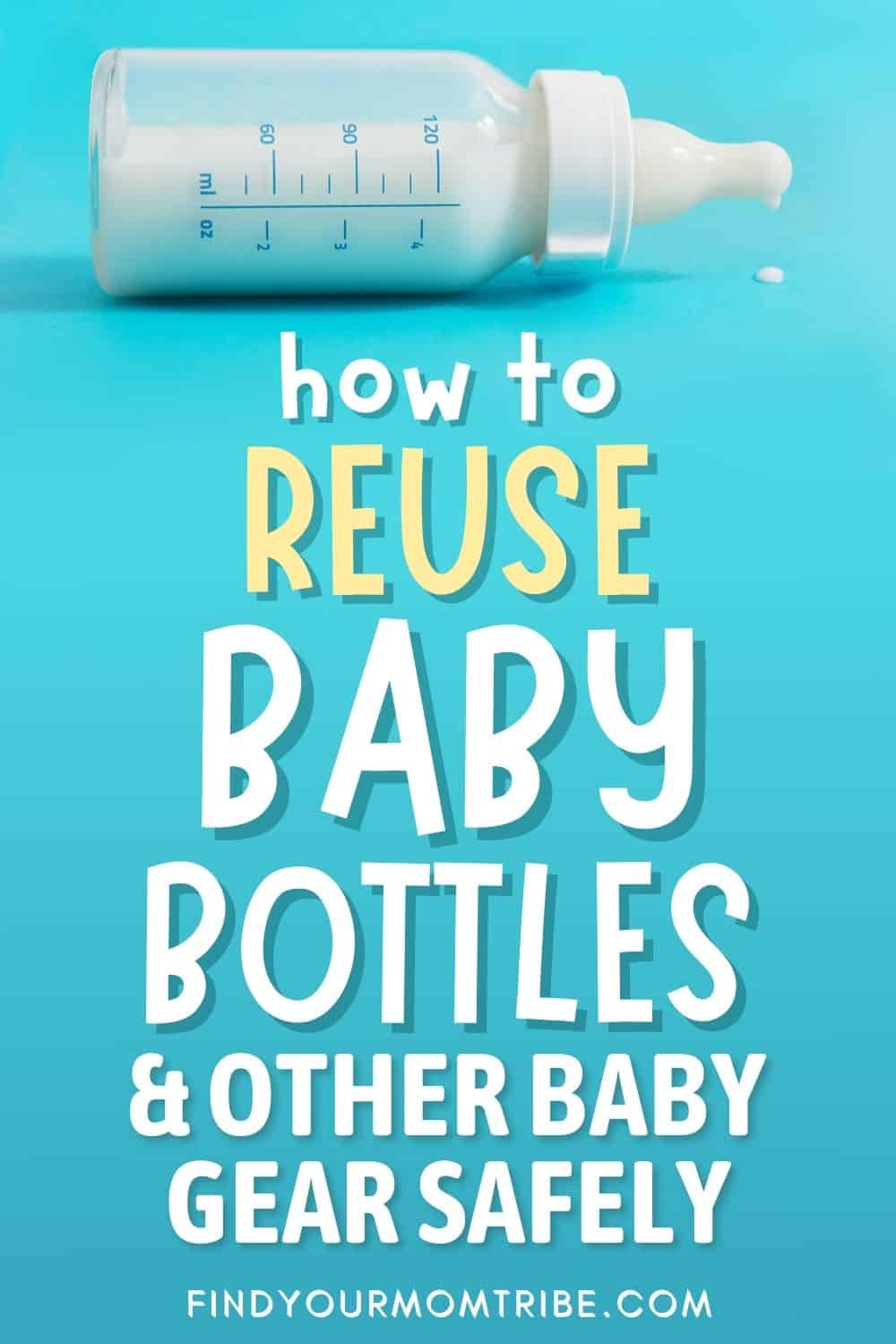
We love honesty! Find Your Mom Tribe is an Amazon Associate and we earn from qualifying purchases through affiliate links at no extra cost to you. Please see our full Amazon Affiliate disclosure for more information.

